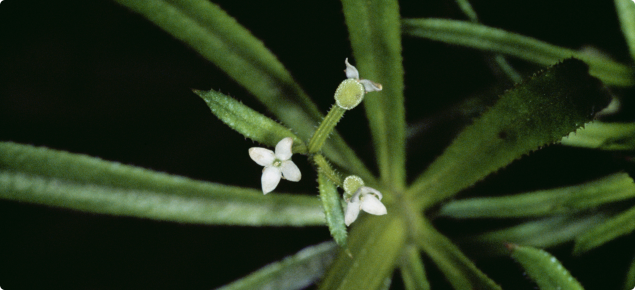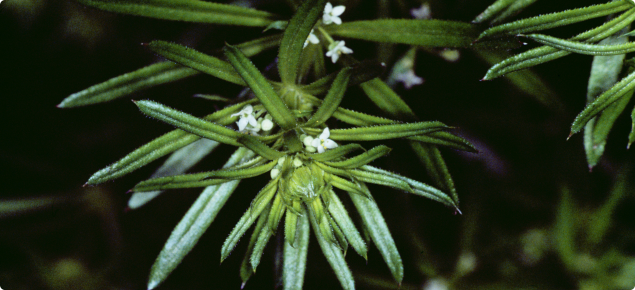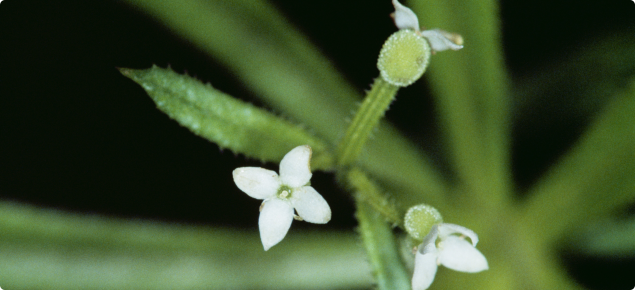Three-horned bedstraw
Three-horned bedstraw (Galium tricornutum) is an annual weed that poses a significant threat to Western Australia’s grains industry.
It is a competitive climbing plant that forms dense masses of tangled stems in crops, along fencelines and in wasteland. Interstate experience shows that heavy infestations of the weed can halve crop yields.
Bedstraw is difficult to control in canola and pulse crops, and the size of the seed makes it difficult to separate from canola during seed cleaning.
If the weed were to become widespread and fully established in Western Australia, it would impact the state’s grains industry as a result of extra weed control costs and foregone yield.
A recent economic assessment of the impact of bedstraw estimated that the damage caused by uncontrolled bedstraw to WA agriculture over a 30-year period would average $1.5 million a year (Cook 2014).
Bedstraw infestations have been found on four separate properties in the Western Australian agricultural area since 2001. It has been eradicated from two of these.



